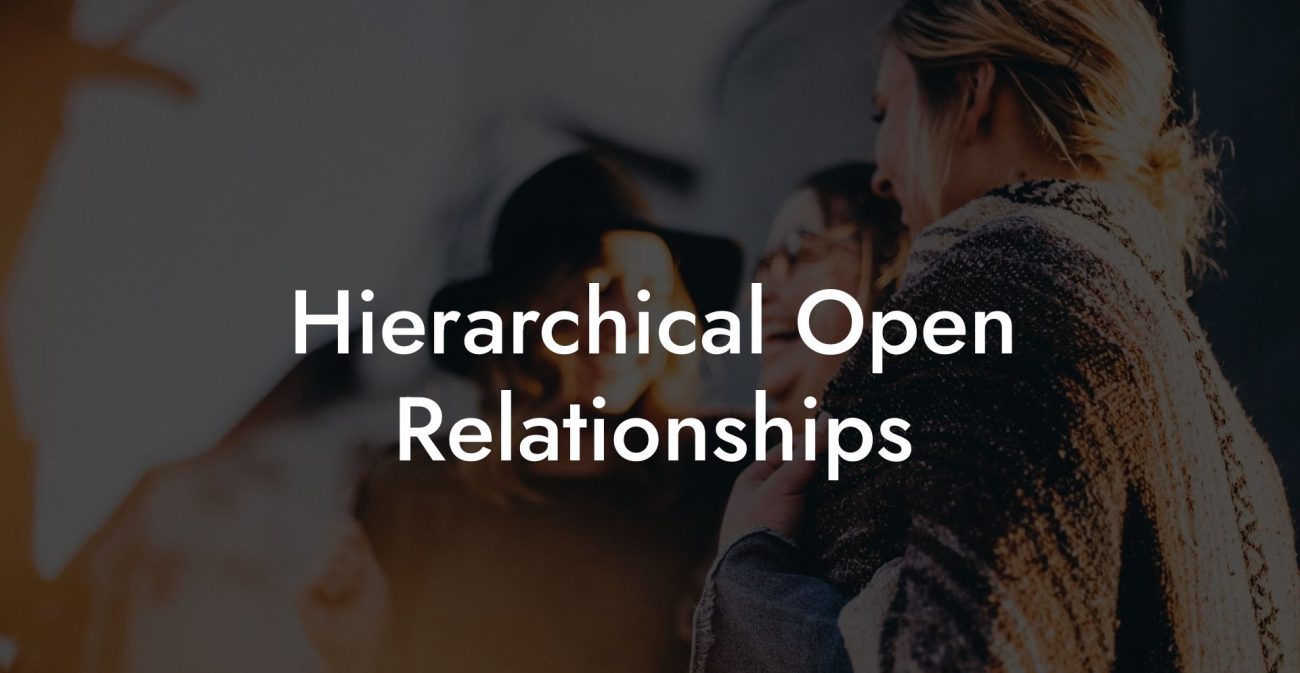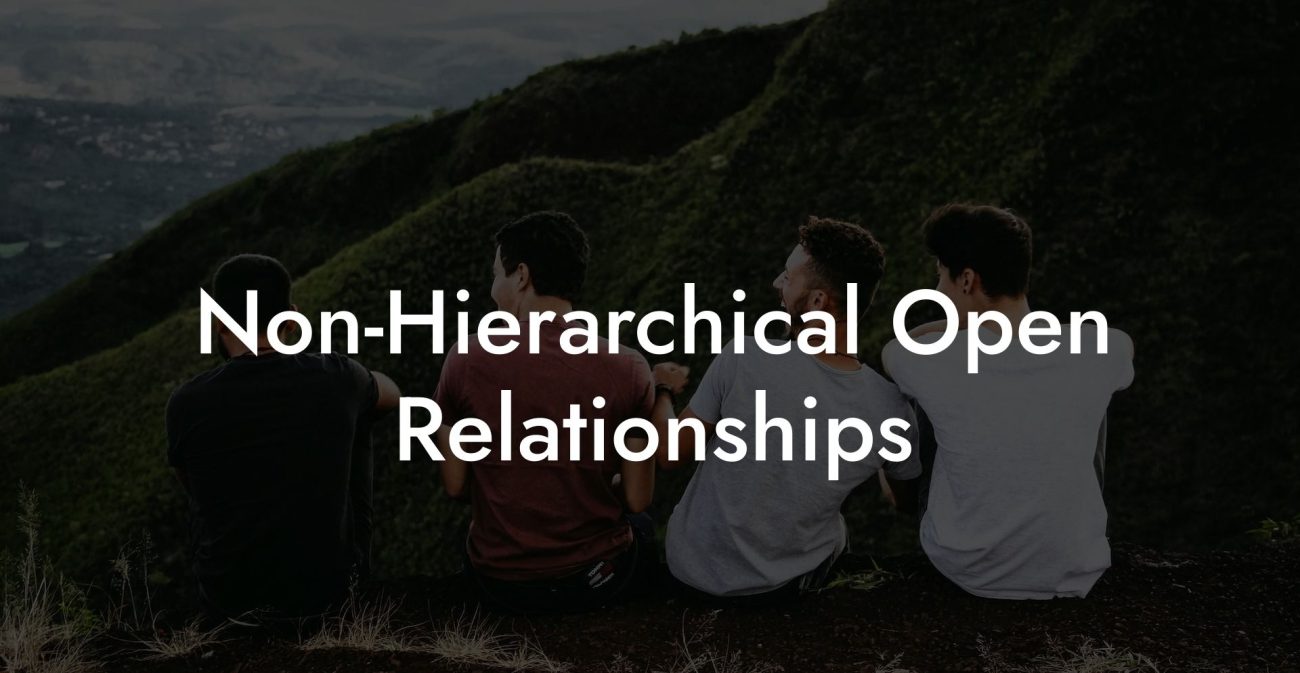Polyamorous vs Monogamous: Key Differences

Two of the most commonly discussed relationship models are polyamorous relationships and monogamous relationships. Although both offer opportunities for deep connection and personal fulfillment, they differ fundamentally in structure, commitment, communication, legal recognition, and emotional dynamics. This guide explores these key differences in detail, providing definitions, historical context, ethical considerations, and practical strategies to help you understand which model might best suit your values and lifestyle.
Quick Links to Useful Sections
- Understanding Polyamorous Relationships
- Definition and Core Principles
- Historical and Cultural Context
- Understanding Monogamous Relationships
- Definition and Core Features
- Key Differences Between Polyamorous and Monogamous Relationships
- Commitment and Exclusivity
- Structure and Relationship Dynamics
- Communication and Negotiation
- Legal and Social Recognition
- Emotional and Psychological Dynamics
- Benefits and Challenges
- Benefits of Monogamy
- Challenges of Monogamy
- Benefits of Polyamory
- Challenges of Polyamory
- Practical Strategies for Navigating Your Relationship Model
- Self-Reflection and Goal Setting
- Develop Strong Communication Skills
- Set and Revisit Boundaries
- Prioritize Self-Care and Personal Well-Being
- Build a Supportive Network
- FAQ: Your Polyamorous vs Monogamous Questions Answered
Understanding Polyamorous Relationships
Definition and Core Principles
Polyamorous relationships involve engaging in multiple consensual romantic or sexual relationships simultaneously. The term "polyamory" is derived from the Greek "poly," meaning many, and the Latin "amor," meaning love. At its core, polyamory is founded on the belief that one can form deep, meaningful connections with more than one person at a time, and that love is not a finite resource.
The core principles of polyamory include:
- Consensual Non-monogamy: Every relationship is formed with the full knowledge and agreement of all parties involved.
- Transparent Communication: Ongoing, honest dialogue is essential to navigate expectations, boundaries, and emotional needs.
- Flexibility: Polyamorous relationships are often fluid; the structure may be hierarchical, non-hierarchical, or even solo, adapting to the evolving needs of each individual.
- Mutual Respect: Each partner’s autonomy and individuality are respected, and the relationships are nurtured through shared trust and support.
- Emotional Diversity: The model allows for a variety of emotional connections, enabling individuals to receive different forms of support from different partners.
Historical and Cultural Context
Although the term "polyamory" is relatively new, the concept of multiple romantic connections is not. Many indigenous cultures and historical societies practiced forms of consensual non-monogamy without using the label polyamory. Today, the polyamorous movement has gained momentum as more people seek relationship models that allow for greater emotional and sexual diversity while upholding principles of consent and honesty.
Cultural acceptance of polyamory is growing, particularly within progressive communities that value personal freedom, emotional authenticity, and non-traditional forms of connection.
Understanding Monogamous Relationships
Definition and Core Features
A monogamous relationship is defined as an exclusive bond between two individuals who commit to being romantically and sexually involved only with each other. This traditional model is the predominant relationship structure in many societies and is reinforced by cultural, religious, and legal institutions.
Key features of monogamous relationships include:
- Exclusivity: Both partners agree to devote their intimacy solely to each other.
- Long-Term Commitment: Monogamous relationships are often intended to be long-lasting or lifelong, frequently formalized through marriage.
- Legal Recognition: In most cultures, monogamous marriages are legally recognized and come with specific rights and protections such as inheritance, custody, and spousal benefits.
- Focused Emotional Bond: The exclusivity of monogamy can foster a deep, concentrated emotional connection between partners.
Historical and Cultural Context
Monogamy has deep historical roots, especially in Western cultures. Influenced by religious doctrines—particularly Christianity—and reinforced by legal institutions, monogamous marriage became the standard model for forming families and structuring societies. The cultural narrative of the nuclear family further bolstered monogamy as the norm.
Although monogamy provides many benefits, some individuals feel that a strictly exclusive relationship may not fully meet their emotional or sexual needs, prompting exploration of alternative models.
Key Differences Between Polyamorous and Monogamous Relationships
Commitment and Exclusivity
Monogamy: Centers on a singular, exclusive bond between two individuals. The commitment is focused solely on each other, which often leads to a deeply concentrated emotional and sexual connection.
Polyamory: Involves multiple, simultaneous relationships. While some polyamorous arrangements include a primary partnership, others are non-hierarchical, with no single relationship taking precedence. The commitment in polyamory is distributed across multiple bonds, each offering its own level of intimacy and support.
Structure and Relationship Dynamics
Monogamy: Has a straightforward structure where the roles, responsibilities, and expectations are clearly defined between two partners. This simplicity can facilitate focused communication and decision-making.
Polyamory: Is inherently more complex. Relationships can be structured hierarchically—where one connection is prioritized—or non-hierarchically, where all relationships are considered equal. This diversity allows for multiple sources of support but also demands higher levels of coordination and negotiation.
Communication and Negotiation
Monogamy: Typically involves bilateral communication that is centered on deepening the bond between two individuals. Conflicts are generally resolved through direct dialogue between partners.
Polyamory: Requires ongoing, multi-directional communication among all partners. Negotiating boundaries, managing expectations, and addressing emotions such as jealousy require robust, transparent dialogue. This level of communication can foster significant personal growth but also introduces complexity.
Legal and Social Recognition
Monogamous Relationships: Are legally recognized in nearly all societies, providing a framework for rights and benefits. The legal system supports monogamy through marriage laws and family policies.
Polyamorous Relationships: Generally do not receive formal legal recognition as marriage is typically defined as an exclusive union between two people. This lack of recognition can affect legal matters such as inheritance, custody, and spousal benefits, even though polyamorous relationships are based on ethical, consensual non-monogamy.
Emotional and Psychological Dynamics
Monogamy: Often fosters a deep, exclusive emotional connection, which can lead to high levels of trust and intimacy. However, the singular focus might limit the range of emotional support available.
Polyamory: Offers diverse emotional support from multiple partners. This variety can enrich an individual’s emotional life and provide multiple perspectives on intimacy, though it also requires managing complex emotions such as jealousy and ensuring balanced attention among partners.
Benefits and Challenges
Benefits of Monogamy
- Simplicity: With only two people involved, roles and responsibilities are clear, making communication and decision-making more straightforward.
- Legal and Social Support: Monogamous relationships, particularly marriages, are widely recognized and supported by legal frameworks and cultural norms.
- Focused Emotional Bond: The exclusive nature of monogamy can lead to a profound, focused emotional connection and high levels of intimacy.
Challenges of Monogamy
- Limited Emotional Diversity: Relying solely on one partner for all emotional needs might not fully satisfy an individual’s desire for varied support.
- Potential for Complacency: Over time, the lack of novelty can lead to stagnation in both emotional and physical aspects of the relationship.
- Pressure to Conform: Societal and cultural expectations can place pressure on partners to maintain exclusivity even when personal needs evolve.
Benefits of Polyamory
- Diverse Emotional Support: Multiple partners can provide different types of care and perspectives, enriching the emotional landscape.
- Personal Growth: The dynamic nature of polyamory encourages improved communication, conflict resolution, and self-awareness.
- Flexibility: Polyamory allows for tailored relationship structures that can evolve with changing personal and emotional needs.
- Exploration of Intimacy: Engaging with multiple partners can open up opportunities to experience various forms of connection and fulfillment.
Challenges of Polyamory
- Emotional Complexity: Managing the feelings of multiple partners requires advanced communication skills and emotional intelligence.
- Time and Energy: Balancing time among various relationships can be challenging, potentially leading to feelings of neglect or burnout.
- Social Stigma: Polyamorous relationships may face misunderstanding or prejudice from those who adhere to traditional monogamous norms.
- Negotiation of Boundaries: Constantly renegotiating boundaries to accommodate the needs of multiple partners can be demanding.
Practical Strategies for Navigating Your Relationship Model
Self-Reflection and Goal Setting
Start by reflecting on your personal values, relationship goals, and what you seek in a partnership. Ask yourself:
- Do I value exclusivity and deep, focused intimacy, or do I desire diverse emotional connections?
- How do I handle complex emotions such as jealousy?
- What level of legal and social support do I need in my relationships?
- How important is flexibility and personal growth to me?
Develop Strong Communication Skills
Effective communication is essential regardless of your chosen model. Whether you are in a monogamous or polyamorous relationship, establish regular check-ins, practice active listening, and be open to discussing feelings and boundaries. Consider:
- Scheduling regular, dedicated time for discussions with your partner(s).
- Using “I” statements to express your needs and emotions without assigning blame.
- Utilizing digital tools such as shared calendars and group chats to coordinate schedules and maintain transparency.
Set and Revisit Boundaries
Clear boundaries are crucial for maintaining a healthy relationship dynamic. In monogamy, boundaries may focus on exclusivity and shared responsibilities, while in polyamory, they should be negotiated among all partners. Create written or digital agreements that outline:
- Time management and scheduling expectations.
- Guidelines for emotional and physical intimacy.
- Roles and responsibilities regarding household or financial matters.
- Conflict resolution strategies and protocols.
Prioritize Self-Care and Personal Well-Being
Taking care of your emotional, physical, and mental health is essential for sustaining any relationship. Establish routines that support self-care, such as:
- Regular exercise, meditation, or other mindfulness practices.
- Hobbies and activities that bring you joy and relaxation.
- Seeking professional counseling or therapy to enhance emotional resilience.
Build a Supportive Network
Connect with like-minded individuals through online forums, social media groups, and local events. A strong support network can offer practical advice, emotional validation, and a safe space to share experiences. Consider joining:
- Online communities such as r/polyamory.
- Workshops and webinars focused on ethical non-monogamy and relationship dynamics.
- Support groups where you can exchange insights with others who have similar experiences.
FAQ: Your Polyamorous vs Monogamous Questions Answered
1. What is a monogamous relationship?
A monogamous relationship is an exclusive partnership between two individuals who commit to sharing emotional, romantic, and sexual intimacy only with each other.
2. What is a polyamorous relationship?
A polyamorous relationship involves maintaining multiple consensual romantic or sexual relationships simultaneously, with open communication and negotiated boundaries among all partners.
3. How do commitment levels differ between monogamy and polyamory?
Monogamous relationships focus on an exclusive, singular bond, while polyamorous relationships distribute emotional and relational commitment across multiple partners, which can vary in intensity and duration.
4. What are the legal differences between these models?
Monogamous relationships, especially when formalized through marriage, are legally recognized and come with specific rights and benefits. Polyamorous relationships generally lack formal legal recognition, which can affect matters such as inheritance, custody, and spousal benefits.
5. How do communication requirements differ?
Monogamous couples typically engage in focused, bilateral communication, whereas polyamorous relationships require continuous, multi-directional dialogue to coordinate between multiple partners and negotiate boundaries.
6. What are the main emotional differences?
Monogamy often fosters a deep, exclusive emotional bond, while polyamory provides a diverse network of emotional support, requiring advanced emotional intelligence to manage complexities such as jealousy and ensure balanced attention.
7. Where can I find additional resources on these topics?
Additional resources include books such as "The Ethical Slut" by Dossie Easton & Janet Hardy and "More Than Two" by Franklin Veaux & Eve Rickert, podcasts like "Multiamory" and "Polyamory Weekly," and online communities such as r/polyamory.
Resources and Community Support: Your Next Steps
- "The Ethical Slut" by Dossie Easton & Janet Hardy – A foundational text exploring ethical non-monogamy and various relationship models.
- "More Than Two" by Franklin Veaux & Eve Rickert – An in-depth guide providing practical advice on managing relationship dynamics in both monogamous and polyamorous settings.
- Podcasts: Listen to "Multiamory" and "Polyamory Weekly" for engaging discussions and personal experiences on different relationship models.
- Online Communities: Join forums such as r/polyamory and specialized social media groups to share ideas and receive support.
- Workshops and Webinars: Attend events focused on relationship psychology and ethical non-monogamy to expand your knowledge and network with like-minded individuals.
By exploring these resources and applying the strategies outlined in this guide, you can develop a clear, informed understanding of the key differences between polyamorous and monogamous relationships. Embrace continuous learning, open dialogue, and self-reflection as you navigate the diverse landscape of intimacy and commitment.
Lost & confused by all of the terms, types and seemingly made up 3 letter acronyms?? We've got you. Check out our Ethnical Non-Monogamy Dictionary >>
Useful Interruption: Not sure which relationship vibe fits you best? Take our Relationship Test, it’ll give you the real insight into your natural relationship style. Then, dive into our binge-worthy guides (from the tried-and-true to the “wait, that’s a thing?”) and find the perfect relationship type for your life:
- Monogamy
- Open Relationships
- Ethical Non-Monogamy
- Solo Polyamory
- Non-Hierarchical Polyamory
- Hierarchical Polyamory
- Relationship Anarchy
- Swinging
Now back to the main article but yeah take the test...












